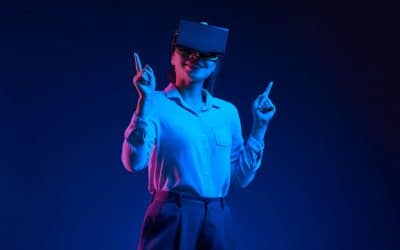A new trend: vocational education trainin
E-learning
The most relevant trend from 2020 to 2021 is online learning. Of course, online learning platforms and opportunities were already existing, but the pandemic accelerated the digitalization of education. E-learning has several advantages varying from the low costs of its maintenance for educational institutions to the fact that education is now more available than ever. Its most important benefit is that it does not need a physical location, and thus, it is available everywhere in the world. Now that the internet and all sorts of digital technology are also reaching the most disadvantaged parts of the world, e-learning is making education available to everyone.
Virtual and augmented reality
Virtual reality is something that can facilitate students’ learning experience. Given the cost of virtual reality headsets, their use in classrooms might be expensive, so the augmented reality seems to be an appropriate alternative. It’s similar to virtual reality, but it projects images or video using the device camera and, since everything is displayed on the screen, it needs no headsets. Virtual or augmented reality possibilities in classrooms are various, such as replacing field trips with virtual ones. It is a suitable, money-saving method that allows students to “travel” basically everywhere. Another advantage includes the possibility of high-technology training. For example, medical students can use it for studying the human anatomy from the inside out.
Mobile-first learning
It’s good news that students can consult their study programs or assignments with just a few clicks. It also allows them to be closer to their education and to be constantly connected. They can thus organize their studies on their own and consult with and interact with other students.

Artificial intelligence
Mobile-first learning is connected to artificial intelligence since mobiles are equipped with operative systems that become more and more personalized every day. Artificial intelligence helps to personalize the learning path of the students. Besides that, it’s a quicker way of learning and teaching. It also helps to spot out lacks such as learning capacities. It’s also good because students get the material more easily than just reading it in the books. Students can submit technologically written evaluations and feedback for the amelioration of the quality of education. This and many other positive sides of artificial intelligence also help educators improve their approaches.
Project-based and experiential learning
Project-based learning and experiential learning are intertwined because they both base themselves on approaches involving real-life experiences. In these cases, students learn by doing, and the educator is more of a guide than a lecturer. Project-based learning is about real-life projects that develop skills that employers appreciate, such as teamwork, creativity, problem-solving, critical thinking, and others. The same qualities are taught while using experiential learning. Experiential learning immerses students in real-life situations. Collaborative exercises, role-playing, and fieldwork are all examples of experiential learning, whether online or not. Both are something that can be done in loco, but that is shifting more and more online.
In other words
In other words, the new educational trends are mostly connected to technology. Nevertheless, there are other factors related to real-life experiences that help students find a job and immerse themselves entirely in the learn-by-doing experience.




